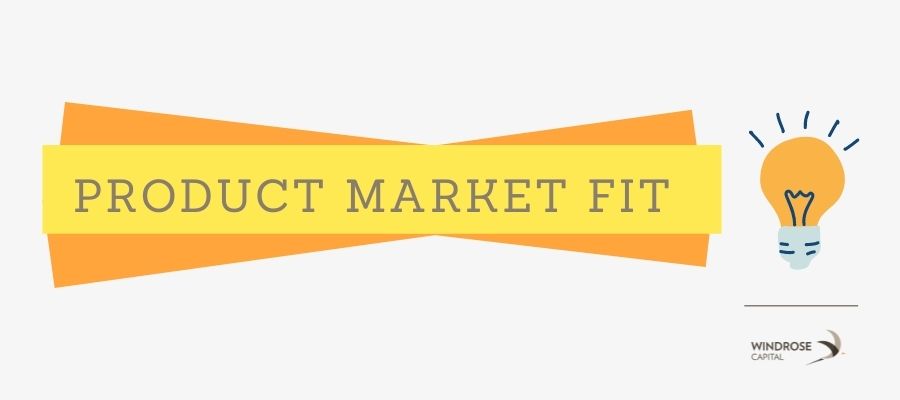A few weeks back we reflected on which of the two were better: FMF or PMF?

Though Founder-Market Fit has gained quite some popularity in the last few years, we still think Product-Market Fit should be a deciding factor before investing in a company. FMF is just a great add-on.
Markets are a great deciding factor to start from. If the market for a gap is vast enough, half of your problem is solved. Most of the valuable companies today started from markets that weren't realized yet. And for venture capitalists, these are the markets that excite us the most.
Many experts argue on what is more ideal. Finding the market then creating the product. Or creating the product, then finding the market. Our call? Whatever works for you.
Different industries work differently. We’ve seen startups from the legal space, healthcare space and e-sports space all approach the above problem differently while also creating great startups. In short, PMF emerges from experiments conducted by entrepreneurs.
How to Achieve Product-Market Fit
The answer lies in testing.
You can realize if your product/service is working in the market with the help of continuous interactions with your customers. Identify what their pain points are and if you are able to solve those for them through your product/service.
But not every pain point has a market demand-supply sorted. In short, go after those pain points that have a big market, impact more people, and would need high frequency to solve. And then figure out what they need to solve that pain point. Henry Ford once said, “if I had asked people what they wanted, they would have said faster horses.” So the key is not to simply identify what these points are but to figure out what they need to solve those points. You can read more about finding and solving these customer problems here.
Contrary to popular belief, you don’t need to raise more capital to achieve PMF. In fact, many VCs ask for proof of PMF before investing in the startup. You only need so much Capital to achieve the initial PMF. But believing that raising capital is the only way to achieve that fit is fundamentally wrong. It's through repeated iterations to figure out what works and what doesn't.
And if you’re losing heart that despite repeated tries you’re not getting the PMF. You’re not alone!
It takes several iterations to achieve the right PMF. It takes focus to stay in your course despite what the media, competition and investors tell you. And it takes courage to keep going at it despite multiple tries.
Achieving PMF is your startup’s mission for the initial years. Naturally, this becomes every employee’s job. The initial days in this journey are challenging with no clarity on linear progress. To have your employees then play a key role in finding that PMF becomes incredibly rewarding for everyone in the journey. It’s not just your cup of tea, is it?
When is PMF happening vs when it isn't?
You always know.
Compared to finding the PMF, figuring out if your startup has found its PMF vs it hasn’t is always an easier battle.
The sales cycle stretching too long and not closing in deals, not much word-of-mouth publicity, harder to recruit, customers aren’t 100% satisfied are some clear indications that the PMF isn’t quite there yet. While we’ve worked with startups like these in the past, one thing we always advise is to remain dynamic and flexible.
If you’ve got an indication of how the PMF isn’t working, the next thing is to quickly work towards it. This might mean tweaking your product or changing the GTM strategy or launching a new feature etc. But the main idea is the faster you can re-direct towards a PMF strategy that might work, the faster you can hope to see the results. The longer you wait to test it out, you might already be out of your customer’s brand recall.
To know more about when to know the startup has achieved PMF, check out this Andrew Chen article on how to know a consumer startup hits the PMF.
Complacency beyond PMF
PMF, like most things in the startup journey, is not set in stone. Achieving PMF once is not a guarantee that it’ll stick around forever.
We live in the age of innovation. With new features, products and variants launching every week, there is always scope for building something better. It’ll be naive to think your customers would be satisfied by the limited offering when you could provide them with much more. Know more about the steps to achieve PMF with customer's insights and how to stay dynamic here.
Like we said, staying flexible and dynamic is always beneficial.
Recognize the ever-changing wants and needs of your target customers and strive to provide that as an add-on of your product/service later. Competition is also a good indicator of what can be done better or what else can be offered in the market. In fact, monitoring competition is a great way to get started in achieving PMF as well as stay on track after achieving PMF.
Why Timing is Important
Perhaps one of the most important factors that determine a startup’s success is timing.
Bill Gross, who’s built startups that were ‘ahead of the time’ argues that Market Timing is the single most important aspect in determining a startups success. But to gauge market timing, an extensive study on your customers’ behavioural consumption and their ability to adopt new solutions is necessary. It becomes complicated since their consumption patterns keep evolving. To achieve the right Market Timing, even Steve Jobs had to wait it out before launching Apple’s iPad.
Watch Bill Gross’s Ted Talk on how timing is the single-most-important factor in the success of a startup.
